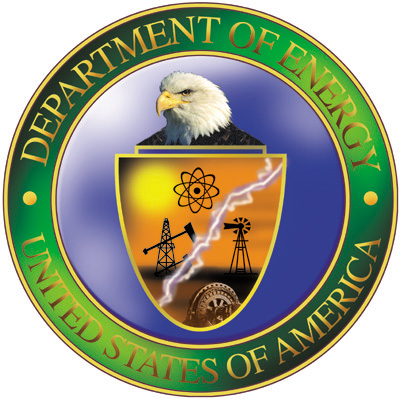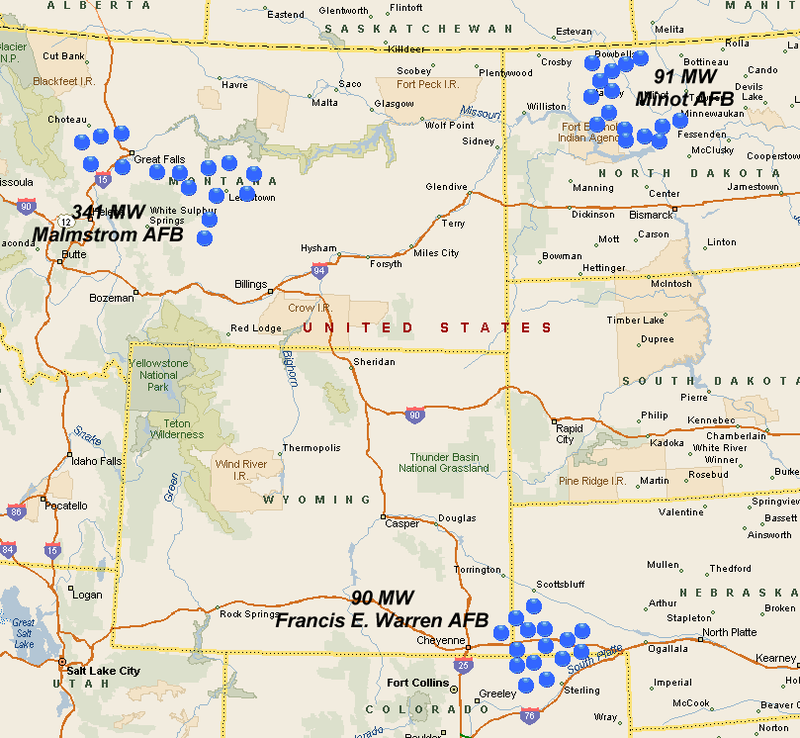
Blog
-
Geiger Readings for November 7, 2014
Ambient office = 79 nanosieverts per hourAmbient outside = 100 nanosieverts per hourSoil exposed to rain water = 70 nanosieverts per hourOrange bell pepper from Central Market = 90 nanosieverts per hourTap water = 66 nanosieverts per hourFiltered water = 61 nanosieverts per hour -
Nuclear Reactors 176 – The NRC and PG&E Secretly Changed the Diablo Canyon License Agreement
I have been blogging recently about misbehavior at the NRC and among U.S. nuclear power reactor operators and owners. I have also blogged about problems at the Diablo Canyon nuclear power plant in California concerning geological fault lines. Since the time that the plant was built, new fault lines have been discovered. Now this issue has wound up in Federal court.
In late October of 2014, Friends of the Earth petitioned the U.S. Federal Court of Appeals. The FoE wanted the Court to overturn a secret decision of the Nuclear Regulatory Commission to alter the operating license of the Diablo Canyon nuclear power plant because the FoE said that that decision was illegal.
In July of 2013, an NRC inspector named Dr. Michael Peck issued a formal dissent to the decisions being reached by the NRC with respect to the Diablo Canyon license. He said that the Diablo Canyon nuclear power plant was not designed, built and constructed to be able to survive the earthquakes that could be generated by the newly discovered faults. Dr. Peck’s dissent was not revealed until September of 2014.
The NRC revealed that in September of 2014 that in September of 2013, it had made changes to the method used to calculate earthquake risks at Diablo Canyon. Basically, the secret finding of the NRC and the rejection of Dr. Peck’s dissent allowed the PG&E to continue to operate the Diablo Canyon plant without any significant upgrades to deal with possible earthquake damage. Only the highest levels of the NRC and PG&E were aware of the changes to the plant license.
NRC regulations and federal law require a public license amendment review whenever the way in which seismic risk or reactor durability is assessed is changed. Instead of following the rules, the NRC in consultation with PG&E secretly revised the Diablo Canyon plant’s license to change the calculation for assessing earthquake risks and then declared that the plant would be able to withstand much stronger earthquakes than indicated by the original calculations.
In a new PG&E report issued in September of 2014, they admitted that a new fault line only 650 yards from the plant was twice as long as they had been claiming since 2011. They also confirmed one of the issues raised by Dr. Peck. He had said that the new fault was connected to two other faults in the area of the plant. These faults could interact to produced much more severe earthquakes that previously anticipated.
The FoE has asked the Court of Appeals for the D.C. circuit to “review the amendment, overturn the amendment and order a public license amendment proceeding as required by federal law.” David Freeman, the former head of the Tennessee Valley Authority and advisor to FoE, charged that fact that PG&E and the NRC secretly conspired to amend the Diablo Canyon license agreement to relax safety requirements. “This was not only illegal. It was an outrage.”
This is a gross violation of the mandate of the NRC to “put safety first.” Diablo Canyon is the nuclear power plant in the U.S. that is most at risk for seismic damage. This plant should be immediately shut down and decommissioned before an earthquake unleashes a cloud of radioactive fallout over California.
-
Radiation News Roundup November 6, 2014
-
Geiger Readings for November 6, 2014
Ambient office = 65 nanosieverts per hourAmbient outside = 61 nanosieverts per hourSoil exposed to rain water = 81 nanosieverts per hourYellow bell pepper from Central Market = 77 nanosieverts per hourTap water = 123 nanosieverts per hourFiltered water = 116 nanosieverts per hour -
Nuclear Reactors 179 – The U.S. Department of Energy Is Funding Research on Advanced Nuclear Technology
I have blogged about United State federal support for research in the nuclear industry before. Recently, the U.S. Department of Energy selected five research and development projects to receive thirteen million in cost sharing funds as part of public-private partnerships. President Obama has articulated an “all-of-the-above” approach to development of future energy sources for the United States as featured in his State of the Union speeches and discussions of U.S. plans for climate change mitigation.
Areva Federal Services has partnered with the TerraPower Company, Argonne National Laboratory and Texas A&M University. This partnership will focus on modeling and simulation of extending the life of nuclear reactors cores. This work will include thermal hydraulic simulation and experimental investigation of liquid metal-cooled fast reactor fuel assemblies. Research in fast breeder reactors cooled by liquid metals has been going on for decades with little success. It is difficult to see exactly how a few million dollars is going to suddenly succeed.
GE Hitachi Nuclear Energy has also partnered with the Argonne National Laboratory. Their partnership will work on the development and modernization of next-generation probabilistic risk assessment methodologies. This is an interesting challenge given that we are still in the process of designing next-generation nuclear reactors which would make risk assessment difficult.
General Atomic has partnered with the University of California at San Diego and the University of South Carolina. Their partnership with research fabrication and testing complex silicon carbide structures related to advanced reactor concepts.
NGNP Industry Alliance has partnered with Areva, UltraSafe Nuclear Company, Westinghouse, and Texas A&M University. Their partnership will research high temperature gas reactor post-accident heat removal. I appreciate the fact that accidents can happen but maybe the money would be better spent in preventing accidents in gas reactors.
Westinghouse has partnered with the Argonne National Laboratory and the University of Pittsburg. Their partnership will focus on the development of thermo-acoustic sensors for sodium-cooled fast reactors. Sodium-cooled fast reactor projects have often failed and been abandoned but I suppose if we are going to keep throwing money at them, we should have good sensors.
The U.S. Energy Secretary claims that these public-private research partnerships on advanced nuclear technologies will help the U.S. achieve a “low carbon future.” He also said that “These types of investments are crucial to the continuing role of nuclear power as a significant contributor to the US energy economy.” This may be true but the important question is whether or not nuclear power should be a part of future U.S. electricity generation. One of the reasons that nuclear power is even considered as a possible low carbon power source is that some sources of carbon dioxide in the construction, fueling and waste handling of nuclear power reactors are not being included in the calculation of the nuclear power carbon footprint.
Considering that the construction of a single nuclear power reactor can run into billions of dollars, the grant of a few hundred million dollars for these “critical research projects” seems rather paltry. The DoE has been trying to give out twelve billion dollars in loans for nuclear reactor construction for seven year without success. Perhaps some of this money should be spent in developing these “advanced nuclear technologies” that we keep hearing about.
-
Radiation News Roundup November 5, 2014
Nuclear expert says Fukushima is a pretty close approximation of ‘The China Syndrome.’ enenews.com
A year-long operation to remove all the used fuel assemblies from the storage pool at the damaged Fukushima Daiichi unit 4 has been successfully completed. world-nuclear-news.org
Unit 1 of the Fangjiashan plant in China’s Zhejiang province has been connected to the electricity grid, becoming China’s 22nd operating power reactor. world-nuclear-news.org
-
Geiger Readings for November 5, 2014
Ambient office = 82 nanosieverts per hourAmbient outside = 118 nanosieverts per hourSoil exposed to rain water = 107 nanosieverts per hourRed bell pepper from Central Market = 49 nanosieverts per hourTap water = 81 nanosieverts per hourFiltered water = 75 nanosieverts per hour -
Nuclear Weapons 95 – More Firings and Disciplinary Action in the U.S. Nuclear Missile Forces
I have posted about problems in the United States nuclear missile forces in the past. In the last few years, the commander of U.S. nuclear missile forces was fired because of unacceptable drunken behavior at a conference in Russia, a second in command was demoted because he was passing counterfeit poker chips at a casino, missile control officers were punished for cheating on monthly exams intended to demonstrate their understanding of their duties and drug use was discovered among the personnel at the nuclear missile bases. In addition, there have been widespread morale problems and deteriorating facilities at U.S. nuclear missile bases for years. It was very disturbing for me to discover just bad it had gotten for our nuclear missile forces. Now more problems have just surfaced.
Col. Carl Jones, the Number Two commander of the 90th Missile Wing at F.E. Warren Air Force Base in Wyoming was just dismissed “for a loss of trust and confidence in his leadership abilities.” He has been reassigned to a position as special assistant to the wing commander. An internal investigation confirmed that he had been guilty of conduct unbecoming an officer and a gentleman, and cruelty and maltreatment of a subordinate. “In four separate instances, Jones acted in a manner that degraded his status as a senior officer and wing leader including maltreating a subordinate.”
Lt. Col. Jimmy “Keith” Brown was just relieved of command of his missile squadron last Monday “because of a loss of confidence in Brown’s ability to lead his squadron.” The investigation of Brown “substantiated that Brown engaged in unlawful discrimination or harassment.” The investigation also found that Brown “made statements to subordinates that created a perception within his squadron that pregnancy would negatively affect a woman’s career.” In addition, it was found that Brown had “failed to ensure the well-being of his troops.”
In March, two of Brown’s troops were operating a launch control center at the Minot missile base when they felt ill because a refurbishment project released fumes into the control center. The two crewmen remained at their posts because they were afraid that Brown would have taken action against them if they left the control rooms. They were eventually taken to the hospital.
Col. Richard Pagliuco, commander of the 91st Operations Group which has authority over three missiles squadrons at the Minor base, was also a target of the investigation at Minot. It was determined that Pagliuco “failed to promote and safeguard the morale, well-being and welfare of the airmen under his command.” The admitted administrative punishment for Pagliuco consisted of a letter added to his personnel file. The investigators would not share any more detailed account of punishment that Pagliuco might have received.
As I have said in past posts, service in the missile forces is not viewed as “plum” assignment. The missile bases are located in remote areas of Montana, Wyoming and North Dakota. The duty is demanding and tedious. If they are ever called on to launch the missiles, they know that they would be contributing to the end of human civilization. Bored to death, they fear ever being called on to execute their duty. Total nuclear disarmament must be pursued as vigorously as possible as threat to the future of the human race.
U.S. Minuteman nuclear missile sites:
-
Geiger Readings for November 4, 2014
Ambient office = 99 nanosieverts per hourAmbient outside = 97 nanosieverts per hourSoil exposed to rain water = 110 nanosieverts per hourCrimini mushroom from Central Market = 75 nanosieverts per hourTap water = 68 nanosieverts per hourFiltered water = 61 nanosieverts per hour






